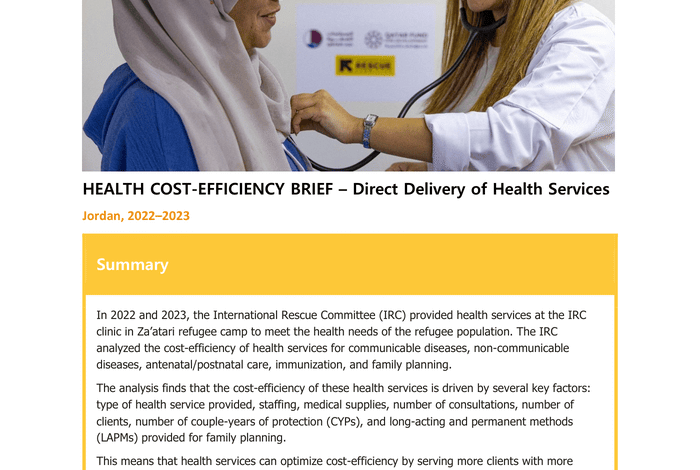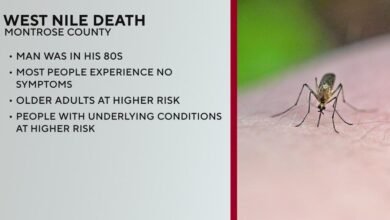Unbelievable Ways Jordan is Revolutionizing Healthcare Delivery and Slashing Costs in 2022-2023!

Health Cost-Efficiency: Direct Delivery of Health Services in Jordan, 2022-2023
The healthcare landscape in Jordan has undergone significant transformations over the past few years, particularly in the realm of health cost-efficiency. This blog post delves into various dimensions of direct delivery health services in Jordan, focusing on strategies implemented from 2022 to 2023. The discussion revolves around the efficiency of these services, their accessibility, affordability, and overall quality. The findings demonstrate that investments in direct delivery models have prompted a positive trajectory in health outcomes across diverse populations in Jordan.
The Landscape of Health Services in Jordan
Jordan’s healthcare system is characterized by a mix of public and private providers, with a substantial dependence on donor funding and international agencies to sustain its efforts in delivering healthcare services efficiently. The country’s demographic makeup, coupled with a notable influx of refugees, imposes additional pressure on the existing health infrastructure. As such, enhancing health cost-efficiency has become a priority, particularly in the direct delivery of health services. This approach aims to minimize costs while maximizing health benefits, thereby ensuring that a larger segment of the population can access necessary medical care.
Contextualizing Direct Delivery Health Services
Direct delivery refers to the provision of health services directly to patients without intermediaries. In Jordan, this model has been paramount in addressing barriers to healthcare access, especially in underserved areas. Through direct delivery, health workers can outreach effectively to communities, providing a range of services including primary healthcare, maternal and child health, immunizations, and chronic disease management. This model is tailored to build trust within communities, encouraging individuals to seek care promptly while reducing unnecessary hospital visits.
Strategies for Improving Cost Efficiency
The strategies employed in Jordan from 2022 to 2023 have been multifaceted, focusing on optimizing resource allocation, enhancing workforce capabilities, and leveraging technology.
1. Resource Allocation
One of the foremost strategies has been rationalizing the allocation of resources. The health sector has prioritized funding for programs that demonstrably improve health outcomes. By directing resources towards high-impact interventions, such as vaccination campaigns and maternal health, the government can ensure that every dinar spent translates to significant health benefits. Additionally, the collaboration between public and private sectors has facilitated better resource-sharing practices, fostering efficiency.
2. Workforce Optimization
The enhancement of the healthcare workforce has also played a crucial role in the direct delivery of health services. Jordan has invested in training programs aimed at equipping health workers with the necessary skills to deliver quality care effectively. Furthermore, by employing community health workers, the healthcare system can extend its reach to rural areas where access to specialized medical personnel is limited. This decentralized approach aids in reducing waiting times and promotes prompt care delivery.
3. Leveraging Technology
With the rise of digital health technologies, Jordan has taken steps to incorporate innovative solutions into its healthcare delivery model. Telemedicine and electronic health records (EHRs) have been integral in streamlining patient management processes. Telehealth, in particular, has emerged as a crucial tool for providing care to individuals in remote areas, ensuring that geographical barriers do not obstruct healthcare access. The use of EHRs not only enhances patient data management but also promotes better coordination among service providers.
Impact on Health Outcomes
The direct delivery model has significantly influenced health outcomes in Jordan. Metrics collected from various health facilities indicate improvements in both the access to and quality of healthcare services. Specific achievements include:
- Increased Immunization Coverage: Immunization rates have seen a marked increase, reflecting the successful outreach of the health services to children who might otherwise be missed.
- Enhanced Maternal Health: The number of women accessing prenatal and postnatal care has risen, contributing to lower maternal and infant mortality rates.
- Chronic Disease Management: Transitioning chronic disease patients to community-based care has seen improved adherence to treatment plans.
These health outcome improvements illustrate the effectiveness of the direct delivery model as a pivotal approach to resolving long-standing healthcare disparities, especially in underserved communities.
Challenges Ahead
Despite the positive strides made, there are still challenges to address in bolstering health cost-efficiency through direct delivery methods. Sustainability remains a central challenge, particularly in the context of fluctuating funding from international donors. As the healthcare system navigates through these uncertainties, the need for developing a self-sufficient model that integrates cost-recovery mechanisms will be paramount.
Furthermore, while technology offers significant advantages, ensuring that such innovations are accessible to all—especially marginalized populations—requires careful planning and consideration. Disparities in digital literacy and access to technology must be mitigated to ensure equitable healthcare delivery. It is essential that future strategies continue to engage local communities in order to uphold trust and ensure that health services are culturally competent and responsive to the community’s needs.
Conclusion
Throughout 2022 and 2023, Jordan has made commendable strides towards improving the efficiency and effectiveness of its direct delivery health services. The concerted efforts in resource allocation, workforce optimization, and technological advancements have yielded tangible benefits, significantly impacting health outcomes across the country.
However, for these improvements to be sustained in the long run, a focus on financial sustainability, community engagement, and digital equity must remain at the forefront of health policy discussions. By continuing to adapt and innovate, Jordan can pave the way for a more resilient healthcare system that not only meets the demands of its current population but also anticipates and prepares for future challenges in health delivery.
- Overview of health cost-efficiency improvements in Jordan, 2022-2023.
- Importance of direct delivery health services.
- Strategies include resource allocation, workforce optimization, and leveraging technology.
- Positive impacts on health outcomes, including immunization and maternal health.
- Challenges such as funding sustainability and technological access need to be addressed.





